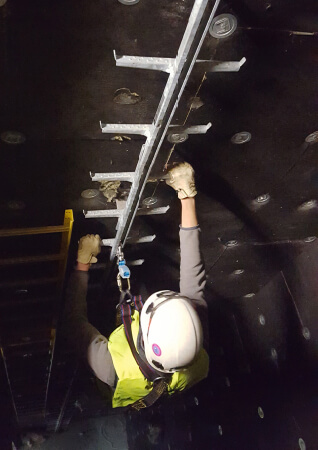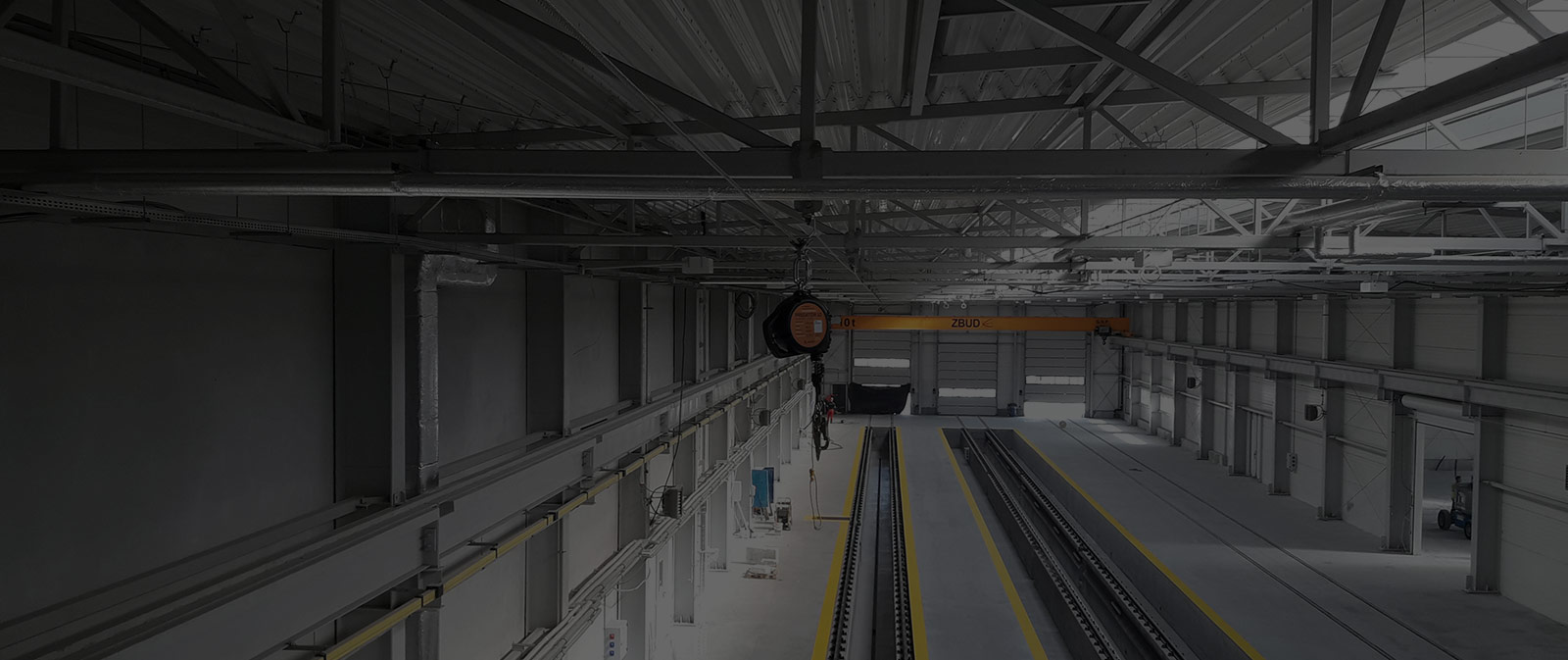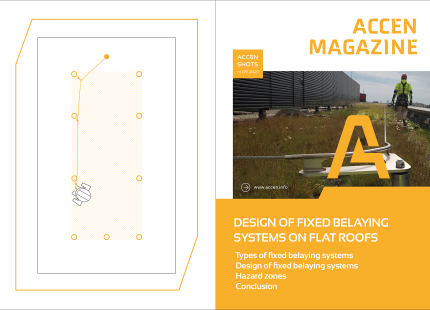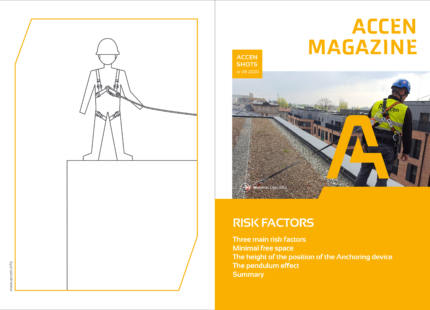
Personal fall protection systems
Choosing the right protective method is a key element of the employee protection system against hazards arising from working at height. If, for organisational, technical or economic reasons, it is not possible to install fixed structures to prevent the risk of falling from a height, including collective protective equipment, then personal protective equipment must be used. The principles for selecting fall protection equipment are specified in EN 363:2018 Personal protective equipment against falls from a height – Personal protective equipment against falls from a height.
Methods of work on a height with the use of individual protective equipment can be divided into:
- Restraint system
- Work positioning system
- Rope access system
- Fall arrest system
- Rescue system
01 Restraint system
This system prevents an employee from entering a fall hazard area (e.g. roof edge) by limiting the length of the connection between the anchor device and the user’s waist strap. It is recommended that the employee working in restraint should be equipped with a safety harness and the element connecting it to the anchor device should have an energy absorber. This is dictated by safety considerations in the event of an error when using incorrect protective equipment, in which case the system will continue to protect the employee. With the correct application of this system, the fall of an employee is not possible. This is the safest of all methods of working at height with personal protective equipment.
02 Work positioning system
This system is used to determine the safe position of an employee who is in the fall hazard area in such a way as to avoid the risk of falling. Slight slides during work are possible, but without the possibility of falling to the ground. An additional fall protection system must be used as a backup in case the work positioning system fails.
03 Rope access system
Rope access is a fall protection system carried out when suspended or supported using ropes. This system always uses two ropes, a working line to move with special devices and a fall protection rope. Each rope shall be connected to an independent anchor device adapted for rope access.
04 Fall arrest system
A system that is designed to stop a free fall and reduce the force acting on the user during a fall. The system must include a connecting and damping subsystem. It is the most commonly used fall protection system using personal protective equipment. It comes in five configurations depending on the nature of the job:
Horizontal rope system with a safety line

System with a guided type fall arrester

Vertical system with a rigid anchor line

Rope system with a guided type fall arrester

05 Rescue system
The rescue system enables evacuation from a workplace located at a height to a safe place. The system also has the function of preventing the free fall of the rescuer and the injured person and allows them to be raised or lowered. The rescue system usually has one rope, but a safety line is mandatory during rescue training.
Always provide a rescue system and a procedure for its safe use when working at height.
06 Summary
Always take into account the parameters of the components used, their proper configuration, and refer to the user manuals of the individual components of the entire system before using a personal fall protection system. It is also advisable to undergo practical training in their use.
The use of a personal fall arrest system is the final method, appropriate when other protective measures cannot be used.














